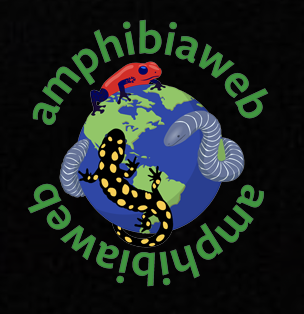
Rhacophorus nigropalmatus
Wallace’s Flying Frog
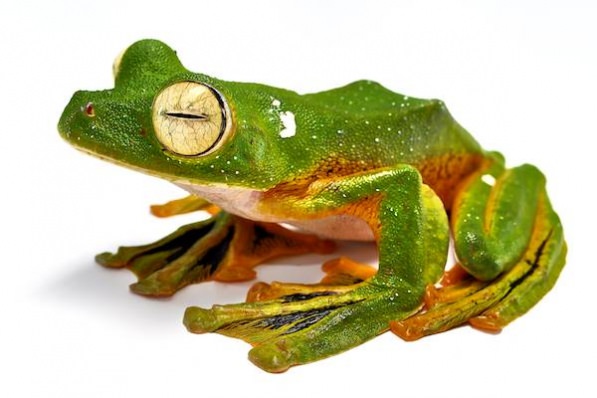

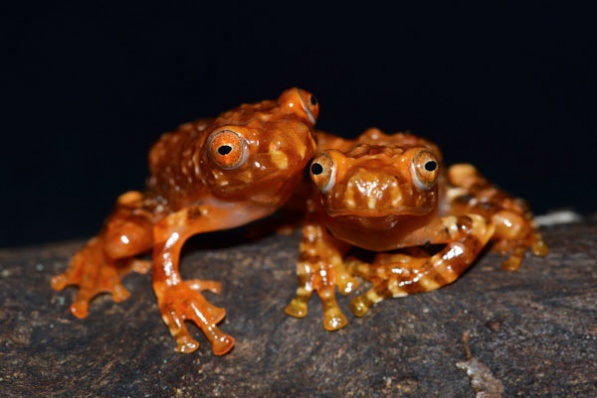

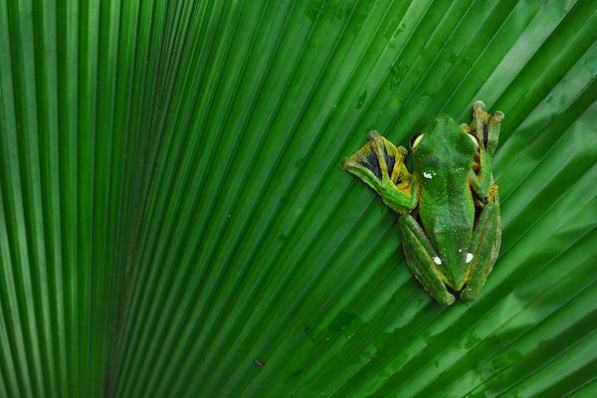
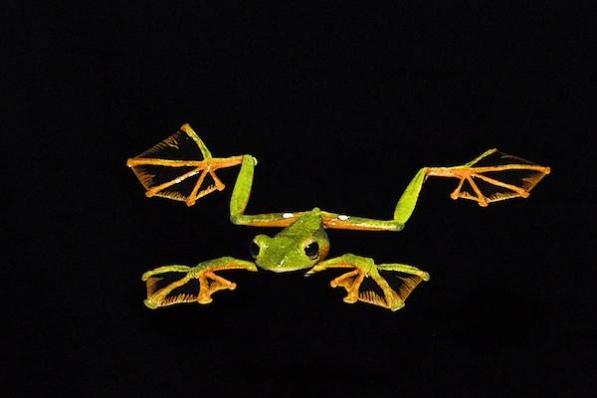

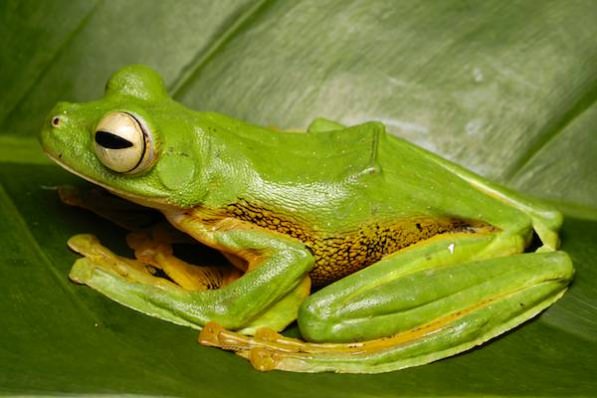
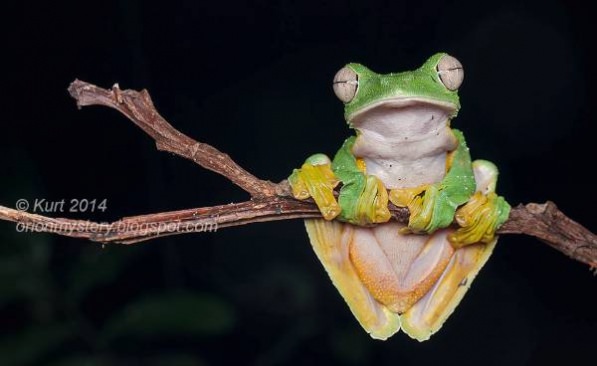

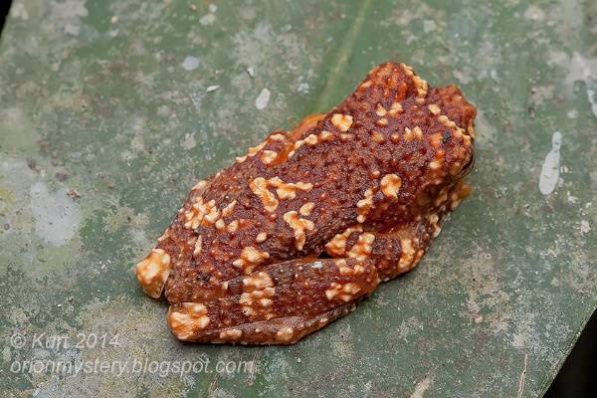
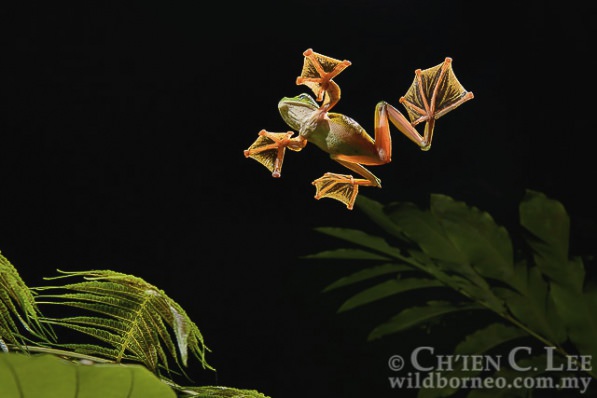
Size of adults: up to 90 mm in males, 100 mm snout-vent length in females. The largest tree frog on Borneo.
This is THE flying frog of Borneo, mentioned by evolutionary biologist Alfred Russel Wallace in his 19th century book on the Malay Archipelago. This emerald green frog is easy to recognize: the big eyes are pale yellow; the hands and feet are huge and appear oversized. There is bright yellow color along arms and legs, contrasting with the black webbing. Fingers and toes terminate in large adhesive pads.
Little is known about the habits of this frog because it lives high up in the canopy of primary lowland rainforest. It comes down from the trees to reproduce in forest ponds such as pig wallows.
According to Inger & Stuebing (2005) the tadpole grows up to 50 mm in total length. It has a conspicuously spotted tail and a grayish color on head and trunk. Tadpoles are most often found in turbid, muddy water, as it is characteristic for pig and rhino wallows. Tadpoles hatch from a foam nest attached to overhanging vegetation or to the mud banks.
Images of the juvenile and the perching adult © Kurt - Hock Ping Guek. Metamorphs and juveniles look dramatically different from the adults. Note that the webbing in the juvenile appears less extensive than the hand webbing of the adult. This might indicate a different microhabitat and different predation pressure in juveniles. Flying adult from below by © Ch'ien Lee.












